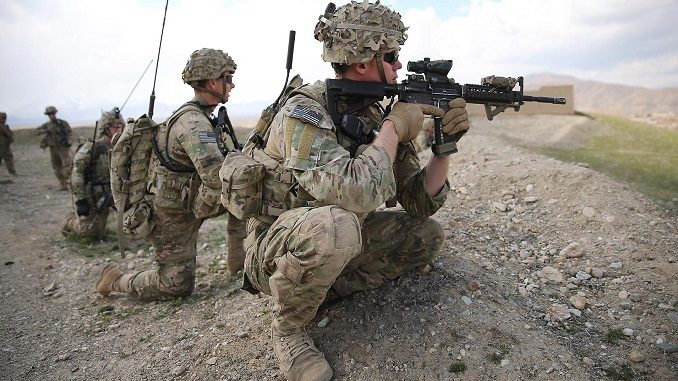
Despite President Donald Trump’s December pledge to withdraw all U.S. forces from Syria, the U.S. government is considering a plan to keep some troops in a remote U.S. base in southeastern Syria to counter Iranian activity, Foreign Policy reported.
The al-Tanf garrison, located near Syria’s eastern border with Jordan, was established to help local forces fight the Islamic State militant group. But the base, which sits along a potential Iranian supply route through Iraq to Syria, has also become a critical buttress for combating Iranian influence in the region.
“Al-Tanf is a critical element in the effort to prevent Iran from establishing a ground line of communications from Iran through Iraq through Syria to southern Lebanon in support of Lebanese Hezbollah,” said one former senior U.S. military commander.
A U.S. presence at al-Tanf helps to block Iran’s hopes for a “Shiite Crescent,” a continuous land bridge from Iran through Iraq and Syria to Lebanon. From this position, Iran could threaten Israel.
Under the current withdrawal plan, the more than 200 U.S. troops who have been advising local Syrian fighters out of al-Tanf will be the last to leave the country, officials say. The vast majority of U.S. troops are concentrated in northeast Syria, hundreds of kilometers from al-Tanf. But given the garrison’s strategic importance, sources said the U.S. government is considering a plan to keep at least some forces there.
The significance is not just the strategic location of al-Tanf itself but also a 55-kilometer exclusion zone, about 34 miles around the garrison, that allows U.S. troops to claim self-defense in striking Iranian or other forces moving through that area, said one source close to the discussions. Legally, the United States does not have the authority to attack a state actor such as Iran unprovoked.
“When they come through, we’ve claimed, I think reasonably, that they’ve been threatening either U.S. forces or partner forces,” a source told FP.
But staying at al-Tanf could raise legal issues for the administration, said one U.S. government official. Experts have argued that the administration would be on shaky ground in using the 2001 Authorization for Use of Military Force—which authorizes the fight against nonstate militant groups such as the Islamic State or al Qaeda in Afghanistan—to justify maintaining a presence in Syria for any reason other than to fight the Islamic State.
The only “logical purpose” al-Tanf serves is to allow the United States to “monitor and disrupt the flow of Iranian-backed militias,” the first source said. “Honestly, you could not contrive a different military mission,” the source said.
Another potential problem is that staying at al-Tanf goes against the President’s initial orders—to withdraw all U.S. forces from Syria. The President has said his only reason for having U.S. troops in Syria is to fight the Islamic State, FP notes.
“Has the president actually approved that? All of his statements are to the contrary,” the U.S. government source said.
“We are focused on a deliberate, coordinated withdrawal from Syria. For operational security reasons, we are not going to discuss timelines or specific movements,” Pentagon spokesman Cmdr. Sean Robertson said.

Be the first to comment